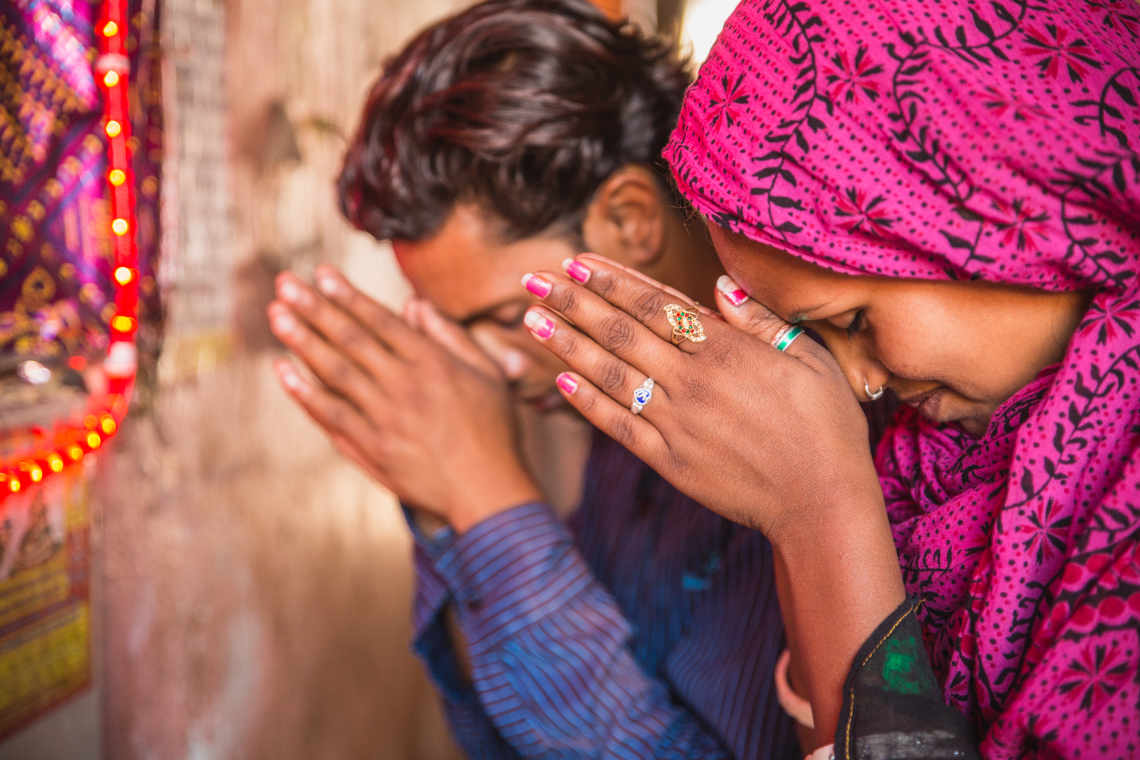Marktforschung zur hinduistischen Religion

Einzelpersonen und Organisationen gründen Unternehmen mit dem Hauptziel, Gewinne zu erzielen. Die Durchführung einer Marktforschung zum Thema Hindu-Religion hilft ihnen, die Grenzen und Bedingungen in diesem Sektor zu verstehen. Alle Überlegungen und Anstrengungen werden unternommen, um eine maximale Kapitalrendite zu gewährleisten.
High demand usually translates to high profit, which positively reflects on the establishment’s image. It is clearly assumed that demand is linked to consumer response.
Das Verbraucherverhalten hat schon immer die Nachfrage nach Produkten und Dienstleistungen beeinflusst. Ein Faktor für dieses Verhalten ist die Religion des Verbrauchers.
Religion is a noteworthy topic because of how it directly impacts the economy. Hinduism, for instance, has a great grasp on South Asia and certain South East Asian countries. Any interested investor must understand the relationship between the religion and its devotees before making any financial move.
Was ist die Hindu-Religion?
Hinduism is the third-largest religion in the world, after Christianity and Islam. It has an estimated 1.3 billion devotees worldwide, mostly in South Asia and South East Asian countries. The followers of the religion are called Hindus.
The Hindus primarily worship three gods: Brahma, the creator, Vishnu, the preserver, and Shiva, the destroyer. However, there are around 33 gods and deities, usually categorized into different groups. Brahma, called by a variety of names, is the only supreme being among them.
The Hindu religion strongly believes in the doctrines of samsara and karma. Samsara means the continuous cycle of life, death, and reincarnation, while karma refers to the return of one’s actions, whether good or bad.
Der Unterschied zwischen dem Hinduismus und anderen Religionen besteht darin, dass es keine formelle Exkommunikation oder Konversion vom Glauben gibt.
Länder, in denen Hinduismus praktiziert wird
Indien ist eines der bevölkerungsreichsten Länder der Welt und besteht zum größten Teil aus Hindus. Fast eine Milliarde Inder sind Anhänger des Hinduismus, insgesamt gibt es 801.000.000 Hindus.
Nepal, Bangladesh, Indonesia, Pakistan, Sri Lanka, Malaysia, and Burma are other countries that practice the Hindu religion.
In nicht-asiatischen Ländern gibt es in den USA etwa 1,8 Millionen Hindu-Anhänger und im Vereinigten Königreich 800.000.
Industries Affected by the Hindu Religion
Hindu religious practices only affect industries within the area where they are primarily practiced. Since almost all Indians are Hindu, the whole country is affected. Focusing on Hindu Religion Market research will help industries gain insight.
Die Wahl der Nahrung ist ein wichtiger Faktor in der Hindu-Religion. Hindus werden gelehrt, lakto-vegetarisch zu leben und Fleisch und Eier zu vermeiden. Die meisten praktizieren eine Einschränkung ihres Fleischkonsums, anstatt ganz auf Fleisch zu verzichten.
Hindus do not eat beef, as cows are considered sacred and represent Mother Nature. Animal lard is also not allowed, making it lucrative for vegetable-based oil to prosper. Interestingly, dairy products are allowed.
Consumption of alcohol is still up for debate. More conservative Hindus avoid consuming alcohol, believing it has a bad influence on the mind and body. On the other hand, liberal Hindus indulge in wine, especially at social gatherings. One of the companies that dominates the wine industry is Sula Vineyards. This wine manufacturer has 52% of the Indian market share.
Similar to alcohol, tobacco is not entirely prohibited. However, some Hindus believe that intoxication is a form of sin. It appears, though, that there is a significant demand for tobacco-based products. Indian Tobacco Company Limited, the leading cigarette company, alone has a market capitalization of 3.3 trillion rupees (around $40 billion).
Another industry positively affected by the Hindu religion is the incense market. Incense, better known in India as Agarbatti, is an integral item in various religious rituals.
In the textile industry, saree and angarkha are in demand. Women wearing their saree connotes how they value their culture as it portrays the deity, while men wear angarkha, which means protecting the body. Although angarkha is now produced and worn by both sexes.
Gelegenheiten

Hier sind Gelegenheiten für Investoren und Unternehmen, die sich für den Hinduismus interessieren, an Orten, wo diese Religion vorherrschend ist:
Die Schweinefleischindustrie und die Importgenehmigung durch die indische Regierung: In recent years, many liberal Hindus have embraced pork-based products as part of their diet. The Indian government announced its approval of allowing the import of pork meat products from the United States. Pork is not a staple in most Indian cuisines. However, many states in India, such as Goa and Karnataka, use pork more in comparison to others. Punjab and Haryana states started building their pig farms to meet the growing demand. Consequently, it influenced the rise of pork dishes, pushing restaurants to update their menu. The Indian government is hoping to expand the range of pork meat available in their local market.
Veganfreundliche Mahlzeitenauswahl: Conservative and food-conscious Hindus rely on fruits and vegetables. Businesses offering vegan-based dishes see this as an opportunity to take over. Interstingly, potatoes is the most consumed vegetable in India, followed by legumes, cauliflower, and baby spinach. Vegan meat manufacturers also follow this trend, offering plant-based meat alternatives. Many start-ups in India offer their products online, which are usually composed of gourmet-inspired vegan dishes.
Anhaltende Nachfrage nach Saris: It is expected that there is a significant demand for saree in the following years. Many textile manufacturers and fashion boutiques have incorporated saree to fit modern expectations. However, the younger generations tend to lean on salwar kameez (also known as Western clothing), especially those in semi-urban and urban places. But the saree category is to remain predominant in the industry, catering mostly to elderly and middle-aged women.
Die Erlösung des Weihrauchmarktes: The incense market suffered a dip a few years ago. However, it has recently experienced growth, with the agarbatti industry experiencing a 30% increase in demand. To maintain its momentum, the industry exports incense to up to 150 countries. Industry trends also show that consumers are inclined to purchase agarbatti in economy or value packs. This means that customers are more likely to purchase in bundles than in pieces.
Über SIS International
SIS International bietet quantitative, qualitative und strategische Forschung an. Wir liefern Daten, Tools, Strategien, Berichte und Erkenntnisse zur Entscheidungsfindung. Wir führen auch Interviews, Umfragen, Fokusgruppen und andere Methoden und Ansätze der Marktforschung durch. Kontakt für Ihr nächstes Marktforschungsprojekt.

